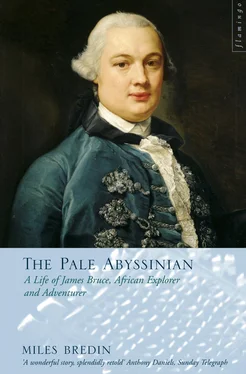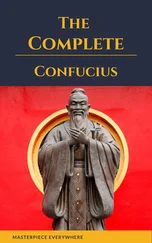Anticipating that he would see no more of his countrymen for some time, Bruce was suffering an attack of the kind of patriotism usually only inspired by the sight of a British consul from behind the bars of a foreign jail. The allies arranged passwords for use during the night, and set off into the desert ‘full of terror about the Atouni’.
It was on this eight-day desert crossing that Bruce first succumbed to a temptation which his family would be unable to resist in generations to come: ‘On each side of the plain, we found different sorts of marble, twelve kinds of which, I selected and took with me’.
The selection and removal of marbles when in foreign parts was to become something of a tradition among Bruce’s descendants, reaching its apogee in his cousin twice removed, the 7th Earl of Elgin. His own interest in marble – though not on such an industrial scale: he only collected small stones – seems almost obsessive. The glowing mountains that punctuate the route to Cosseir are indeed impressive, eight miles of ‘dead green, supposed serpentine marble’ but Bruce describes them in intricate detail, even for him, from the verde antico – ‘by far the most beautiful kind I had ever seen’, to the ‘red marble, in prodigious abundance, but of no great beauty’. It is almost as though he planned to return and start a quarrying enterprise to complement his coal mines.
It was not long before their fears of banditry were realized. An Arab was apprehended trying to steal from Bruce’s tent and was beaten to death by his guards before the Scot could intervene. This was an unfortunate incident, the more so because the Arab worked for Sidi Hassan, the caravan leader. Relations only worsened from then on. After much negotiation, the two leaders had a cagey meeting in the desert at which their respective retinues squared off against each other but no blood was spilled: an uneasy truce was called. It was in this atmosphere that, after ten days, they arrived in Cosseir where Bruce wreaked his revenge. He reported Sidi Hassan to the Bey who promised to discipline him. ‘Now Shekh,’ said Bruce to the Bey, ‘I have done everything you have desired, without ever expecting fee, or reward; the only thing I now ask you, and it is probably the last, is, that you revenge me upon this Hassan.’
Before the Bey could take action, however, Hassan was set upon by the Turks who had allied with Bruce in the desert crossing:
The whole party drew their swords, and … they would have cut Sidi Hassan in pieces, but, fortunately for him, the Turks had great cloth trousers, like Dutchmen, and could not run, whilst he ran very nimbly in his. Several pistols, however, were fired, one of which shot him in the back part of the ear; on which he fled for refuge to the Bey and we never saw him again.
The fashionably hobbled Turks soon left on the boat that Bruce was to charter for his journey to Jiddah (Jeddah).
This was not the only drama that occurred in the ‘small mud-walled village’ that was their embarkation point on the Red Sea. Abd-el-gin, one of Bruce’s servants, was kidnapped and the explorer unwisely charged off alone into the desert to negotiate for his return. ‘I had not got above a mile into the sands, when I began to reflect on the folly of my undertaking. I was going into the desert among a band of savages, whose only trade was robbery and murder, where, in all probability, I should be as ill treated as the man I was attempting to save.’
In a stroke of luck that showed the benefit of his medical training, the kidnappers turned out to be kinsmen of Sheikh Nimmer. He was able to claim protection and rescue Abd-el-gin with the noose, as yet untightened, around his neck.
The Bey soon left Cosseir to continue his tour and Bruce, as the most important person remaining in the town, moved into the fort. While waiting for the boat which would take him to Jiddah, Bruce hired a smaller boat and sailed off to investigate the emerald mountains which, according to Pliny, were supposed to be in the vicinity. Unsurprisingly, they were not made of emeralds. It was another unnecessary brush with death. As he described it in his commonplace book: ‘Nothing but a belief of pre-destination should make a man embark in such vessels they are loaded till within ten inches of the water’s edge after which two planks are added to the waist of the vessel and over these mats are fixed tarred at the joinings and this is all we have to rely upon to keep out the waves.’
They were on their way back to Cosseir after a peaceful voyage during which they had eaten shellfish and made maps of the rocks along the shore, when a storm blew up. It was soon discovered that the sail was nailed to the mast thus making it impossible to take down. The boat started to heave and was in imminent danger of sinking when the captain gave up and consigned their fate to Allah. Incensed, Bruce raged in fury.
‘What I order you is, to keep steady at the helm,’ shouted Bruce over the roar of the wind:
mind the vane on the top of the mast, and steer straight before the wind, for I am resolved to cut that main-sail to pieces, and prevent the mast from going away, and your vessel from sinking to the bottom … D—n Sidi e Genowi, you beast, cannot you give me a rational answer? Stand to your helm, look at the vane; keep the vessel straight before the wind, or by the great G – d who sits in heaven … I will shoot you dead the first yaw the ship gives, or the first time that you leave the steerage.
With that, he lurched across the boat, having ripped off most of his clothes – in case it became necessary to swim – and tore the mainsail to pieces with a machete. When they eventually made it back to the tiny port at Cosseir, they discovered that three boats from that village alone had been lost that day.
On 5 April they were able to set sail for Jiddah in the boat which Bruce had previously chartered. This had canvas sails which could be furled and ‘though small – was tight and well-rigged’. The ship’s captain was experienced and trustworthy though he had an uncanny likeness to an ape, which Bruce found endlessly amusing. He was indeed known by everyone as Ali the Ape. Not one to go on a leisurely cruise when there was work to be done, Bruce decided that he must chart the Red Sea while he was there and hence spent much of his time taking measurements and hurling plummets over the side of the boat. Marine navigation was not something he had studied, yet his chart of the Red Sea was used and valued for many years afterwards. Owing to the plethora of treacherous reefs in the narrow sea, it had previously been impossible for larger boats to travel its entire length. Combined with a treaty with the Bey of Cairo which he managed to forge on his way home, Bruce’s soundings changed all that. He also made an exhaustive survey of where drinking water could be procured, where it was safe to land and which languages were spoken at which ports.
In his Original Portraits, first published forty years after Bruce’s death, John Kay gave an example of how thoroughly Bruce had done the job: ‘Sir David Baird,’ he reported, ‘while commanding the British troops in the Red Sea, publicly declared that the safety of the army was mainly owing to the striking accuracy of Mr Bruce’s chart.’
Baird was a great popular hero who had been captured by Tipoo Sahib in India in 1780 and held captive for four years when he was in his early twenties. In 1801, by then promoted to general and knighted, he led a relief force from the Indian army to help in the removal of Napoleon from Egypt. He sailed up the Red Sea, using Bruce’s chart, marched from Cosseir, using Bruce’s map, and then sailed down the Nile – arriving in Alexandria with plenty of time left to assist in its capture.
The Red Sea inspired Bruce in many way, yet though he succeeded in much that he set out to do there a few of his ambitions proved too challenging. He did chart the sea and open it up to British trade but failed in his desire to solve the riddles of the Bible and the classical writers. He had tracked down and rejected the emerald mountains; he now set himself the formidable task of discovering how Moses parted the sea when being pursued by the Egyptians: ‘If the Etesian wind, blowing from the north-west in summer, could heap up the sea as a wall, on the right, or to the south, of fifty feet high, still the difficulty would remain, of building the wall on the left hand, or the north. Besides, water standing in that position for a day, must have lost the nature of fluid.’
Читать дальше











